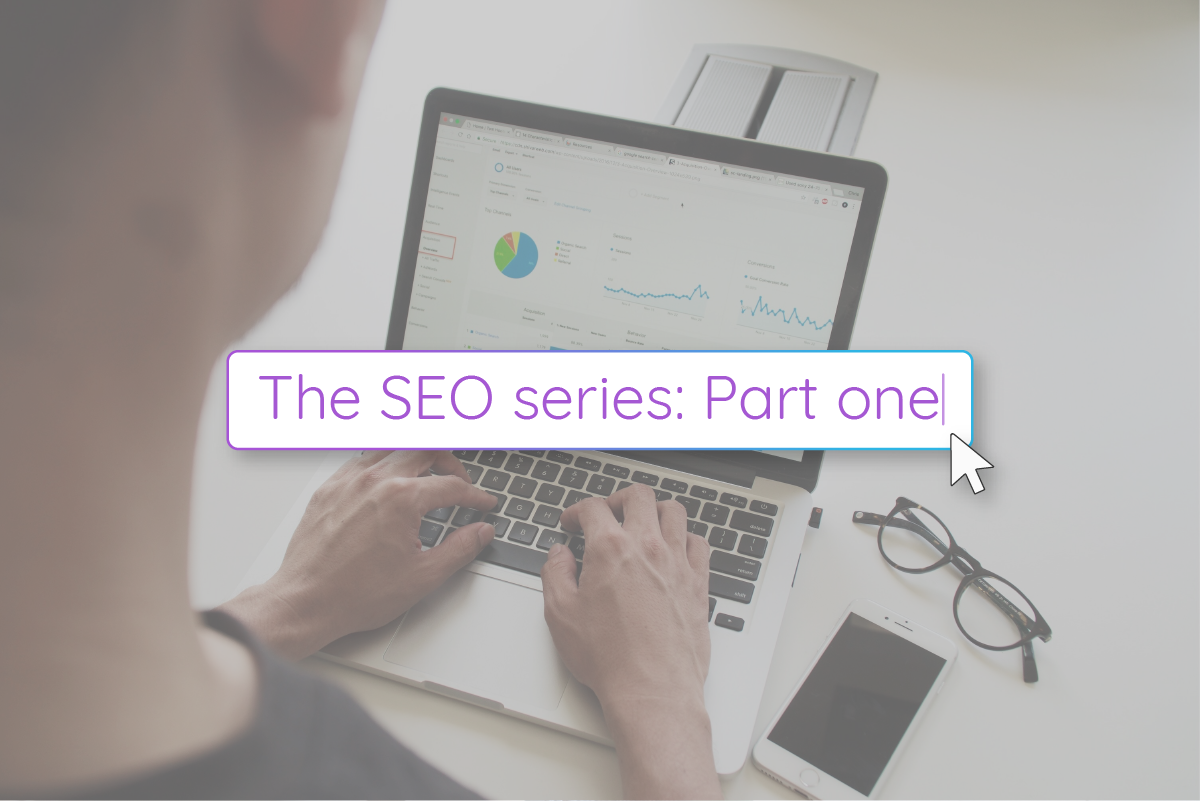
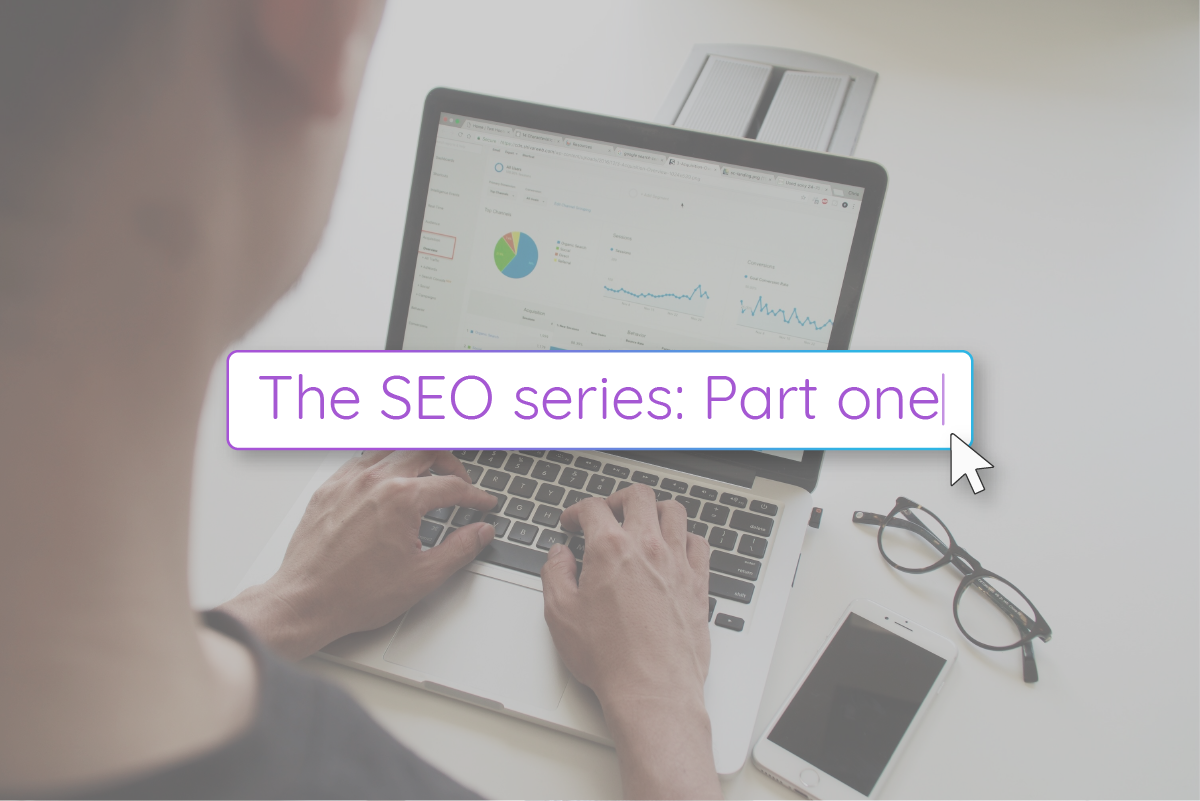
As far as eCommerce marketing is concerned, merchants have a variety of choices. From Instagram ads and influencer marketing to podcasts and Google AdWords, there’s no shortage of tactics you can try if you’re looking to get the word out about your store.
Despite the rise of newer and sexier marketing strategies, search engine optimization – SEO for short – continues to be one of the most effective ways to get your site out there. As Search Engine Land points out, having great visibility in search engines drives awareness and traffic to your site, benefits your brand, and builds credibility and trust.
When done right, SEO can also lead to lower customer acquisition costs over the long term. Once you’ve gotten your site to rank for profitable keywords, you’ll find that people will find your store organically without you having to actively pay for them to do so (unlike with ads).
SEO is clearly an important component of eCommerce marketing. That’s why we’re excited to unveil a new article series here on the Marsello blog. Over the next few weeks, we’re going to be publishing SEO-centric posts to help take your search engine presence to the next level.
To kick things off, we’re covering the basic steps you need to take to optimize your eCommerce site for search.
Let’s dive in.
1. Always start with keyword research
Keyword research is one of the cornerstones of SEO. You need to identify what terms your customers are typing into search engines like Google and what terms connect with your store, then, optimize your site accordingly by adding these keywords into your core content such as the ‘about’ sections and product descriptions.
There are a number of tools that can help you do this. One that easily comes to mind is Google Keyword Planner, a free solution that lets you search for relevant keywords.
Here’s how it works: start by entering keywords relevant to your product. So, if you’re selling tea and tea supplies, you can type in terms like ‘tea,’ ‘teaware,’ ‘tea accessories,’ etc.
From there, Google will show you each keyword’s estimated search volume and level of competition. Google will also suggest other search terms related to the keywords you entered.
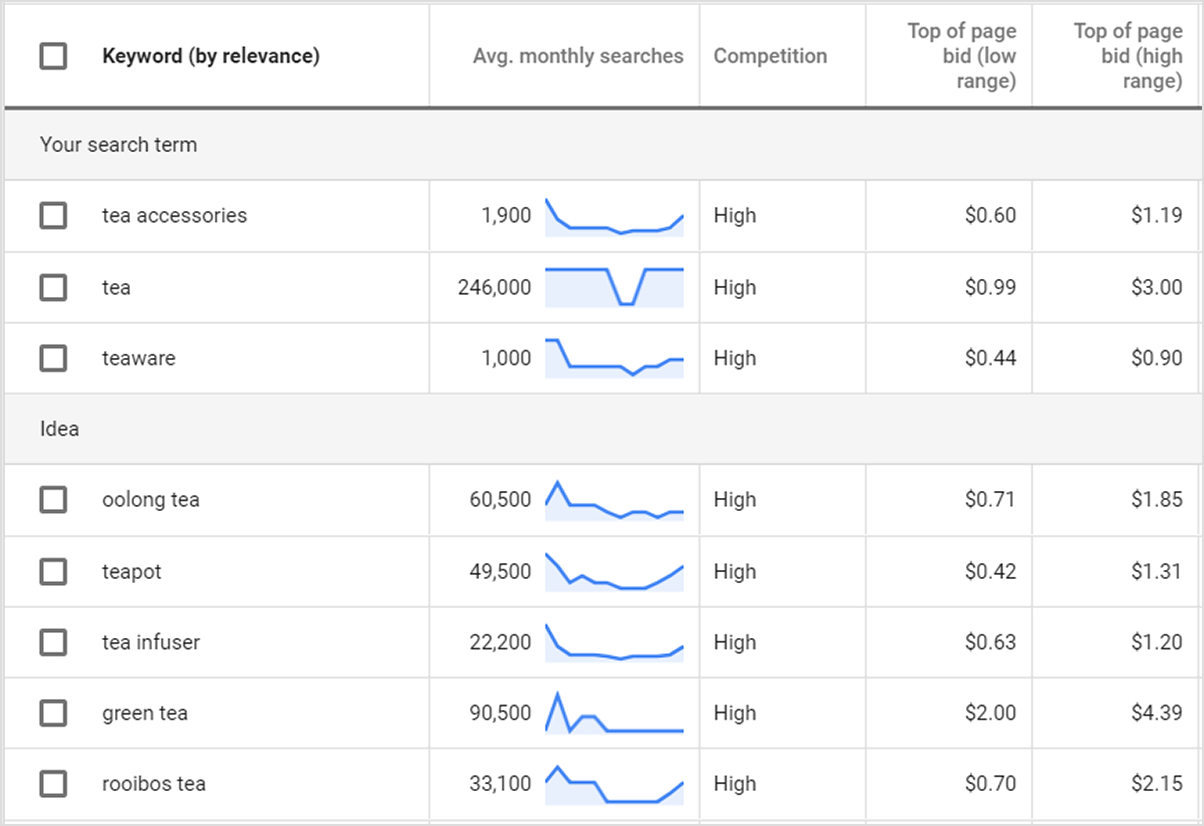
Note that while Google’s Keyword Planner is a solid tool, you may want to check out premium SEO software such as SEMRush and Ahrefs. These solutions can offer more granular data around search volume and provide insights into the keywords you should be targeting.
Now, the best keyword strategy will vary from one site to the next, but generally speaking, you’ll need to factor in the following things when deciding which keywords to target:
Search volume – You want to have a decent number of people searching for the keywords you choose to make the effort of finding and inserting them worth it. If a certain keyword only gets 0-10 searches a month, then it’s best to move on to other keywords with high search rates and close connection to your products/store.
Competition – The more websites competing for a keyword, the harder it is to rank, so targeting low competition search terms will maximize your chances of landing at the first page of Google.
This is where it gets challenging because the keywords with the highest search volume are typically the most competitive. You will need to do a lot of digging to uncover low competition terms with a decent search volume. Start writing a list of the keywords you’ve found and compare their search rates to their competition. Soon you’ll start finding words that fit the bill.
Relevance – This may sound obvious, but determining the relevance of some search terms can be tricky, particularly if a keyword is ambiguous.
For example, if you sell competition-level dart boards, you may think that ‘target’ is a great keyword. Unfortunately, Google thinks ‘target’ searchers want are looking for Target the department store.
You also want to go for keywords that are relevant to people’s intent to buy. Let’s say you’re selling paintings or posters. Keywords like ‘free posters’ or ‘DIY wall art’ are best avoided because people searching these terms aren’t likely to spend money on ready-made art.
Bottom line? When doing keyword research, put yourself in your customer’s shoes. Get into the mindset of someone who is ready to buy your products and identify the search terms that they’re entering into Google.
2. Go beyond optimizing your content
Once you find those relevant keywords, find ways to work them into your website.
The most obvious way to do this is to spread them throughout your copy – i.e., on your homepage, about page, product descriptions, etc.
But you shouldn’t stop there.
Keywords should show up in a lot of other places, as well, including:
Your meta titles – The meta title is an HTML code found at the header of a web page. Its purpose is to tell search engines what a page is all about. According to Moz, “title tags are the second most important on-page factor for SEO, after content.”
What about your meta descriptions? Well, contrary to what some may think, meta descriptions don’t effect rankings directly. Still, it’s worth including your keywords in meta tags because Google will display them in bold on the search results page. This might lead to more clicks, which would help your rankings.
Your URL – Ideally, you want the right keywords in your domain name. For example, Red Dress Boutique (RedDressBoutique.com), a fashion boutique for women, has keywords like ‘dress’ and ‘boutique’ in the domain name.
That said, It’s not the end of the world if your domain name doesn’t contain top search terms. But at the very least, relevant keywords should be in your URLs.
For instance, on its category page for men’s running shoes, Adidas has that exact key in its URL.
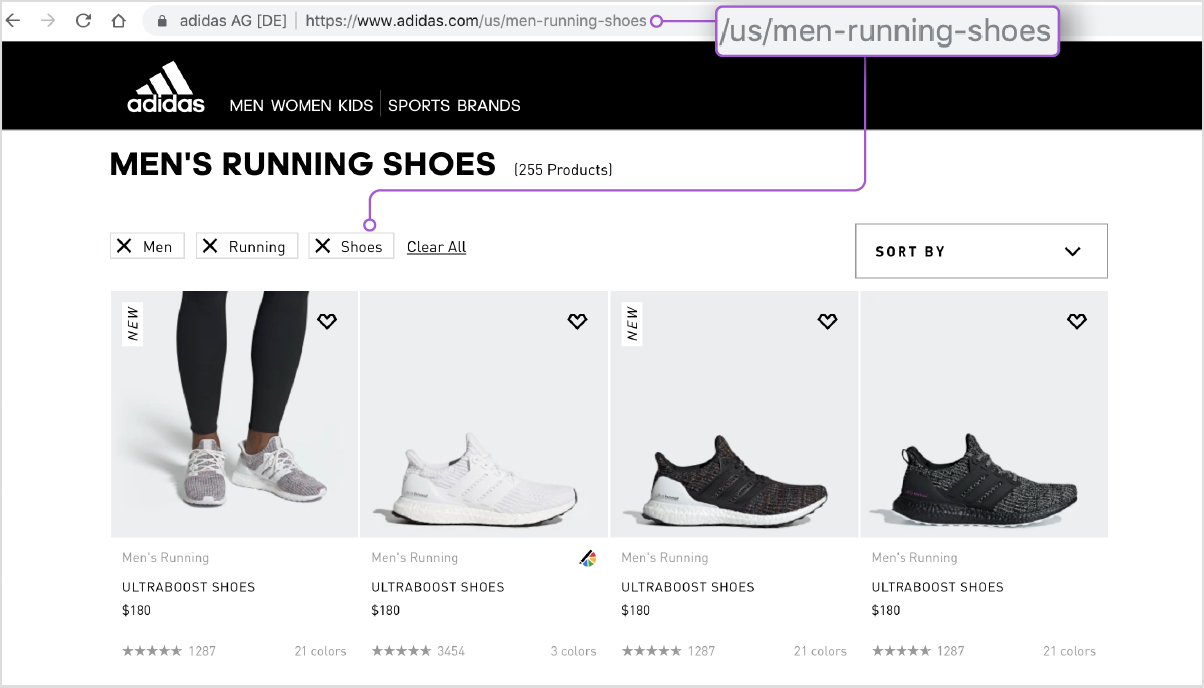
It’s also a good idea to focus on accessibility. Instead of using random characters in your URLs, customize them with keywords and make it clear what the page shows.
3. Work on your product pages
Product pages aren’t usually content heavy, but there are still a number of things you could do to set them up for SEO success.
In addition to optimizing your URLs and title tags, you also want to incorporate the right keywords in your product titles, descriptions, and image tags.
Internal links can also help. Take a look at how búl does their product pages for inspiration.
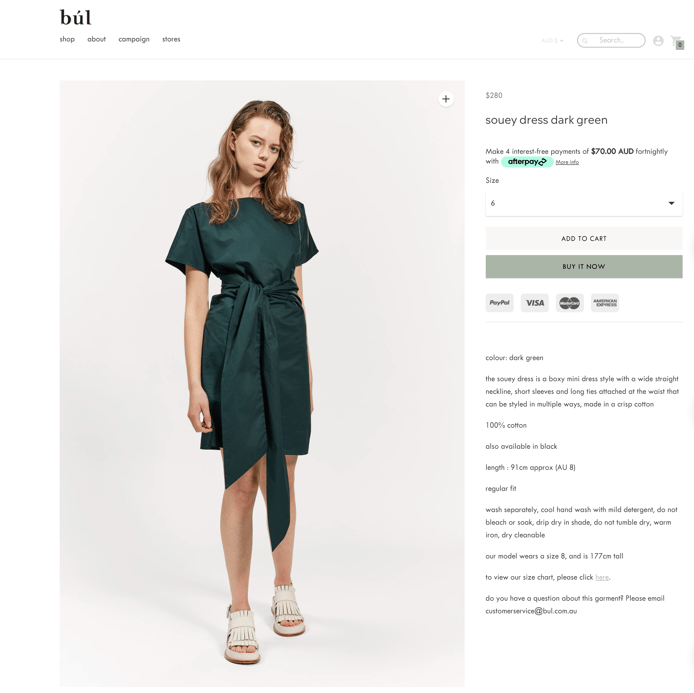
This page isn’t very copy-heavy, however it includes all the information that a customer could be looking for, with a hint of keyword inclusion (for example, 100% cotton; boxy mini dress, garment). With an internal link to a size chart, búl also makes sure to link their customers to another section of their site – a powerful SEO too. They follow each product listing with an 'other products you may like' section that encourages customers to keep exploring búl's website.
4. Prioritize site structure
Google, and your customers, appreciate it when your site is easy to navigate and use, so keep your site structure simple (so long as it remains scalable).
To accomplish this, make sure all your pages are just two or three clicks away from your homepage. HausLondon, an eCommerce site that sells home furniture and lighting, is a great example of this. Despite having thousands of pages, the vast majority are fewer than three clicks from their homepage.
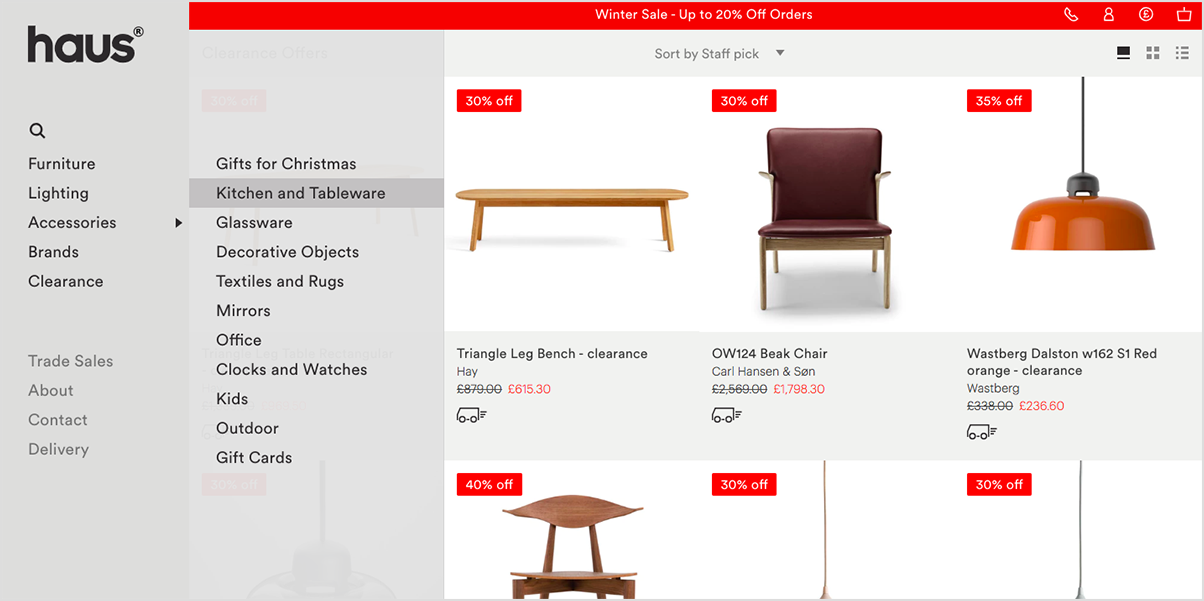
5. Answer the need for speed
Navigability helps but if your site is slow, you risk losing customers who aren’t willing to wait around.
In general, about 40% of users will leave a site if it doesn’t load within just three seconds. That means you could lose nearly half of your potential customers simply because your site takes too long to finally appear when they click on it.
Speed isn’t just about your customers, though. All the way back in 2010, Google’s Maile Ohye, reported that, “Site performance is now a factor in Google’s rankings.” She later went on to say that “Two seconds is the threshold for eCommerce website accessibility. At Google, we aim for under a half second.”
Turning SEO into an ongoing priority
Whether you already have an eCommerce store or its launch is just around the corner, it’s important to understand that optimizing your site for SEO isn’t just a one-time thing.
Instead, analyzing your site for opportunities to improve its rankings should be an ongoing effort to ensure that you're continuously getting in front of the right audiences.
Have you seen the rest of the SEO Series? Check out Part Two and Three in the links below.



